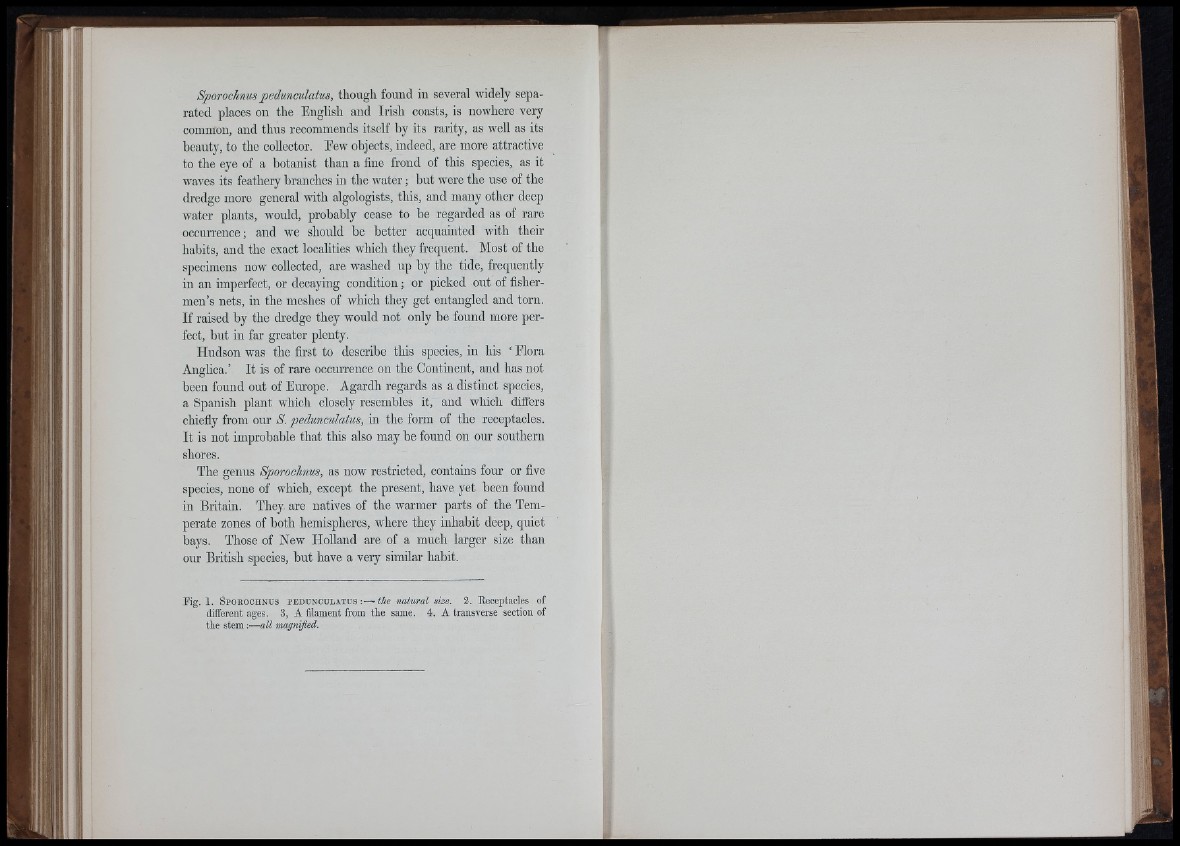
Sporochnus pedunadatus, though found in several widely separated
places on the English and Irish coasts, is nowhere very
common, and thus recommends itself by its rarity, as well as its
beauty, to tbe collector. Few objects, indeed, are more attractive
to the eye of a botanist than a fine frond of this species, as it
waves its feathery branches in tbe water ; but were the use of tbe
dredge more general witb algologists, this, and many other deep
water plants, would, probably cease to be regarded as of rare
occm’rence; and we should be better acquainted with their
habits, and the exact localities which they frequent. Most of the
specimens now collected, are washed up by tbe tide, frequently
in an imperfect, or decaying condition ; or picked out of fishermen’s
nets, in the meshes of wbicb they get entangled and torn.
If raised by the dredge they would not only be found more perfect,
but in far greater plenty.
Hudson was tbe first to describe this species, in his ‘ Flora
Anglica.’ It is of rare occm-rence on the Continent, and has not
been found out of Europe. Agardh regards as a distinct species,
a Spanish plant which closely resembles it, and which differs
chiefly from our 8. pedunculatus, in the form of the receptacles.
It is not improbable that this also may be found on our soutbern
shores.
The genus Sporochnus, as now restricted, contains four or five
species, none of which, except the present, bave yet been found
in Britain. They are natives of the warmer parts of tbe Temperate
zones of both hemispheres, where they inhabit deep, quiet
bays. Those of New Holland are of a much larger size than
our British species, but have a very similar habit.
Fig. 1 . Spokoohnus p e d u n c u la tu s natural size. 2 . Eeceptacles of
different ages. 3, A filament from the same. 4. A transverse section of
the stem:— all i